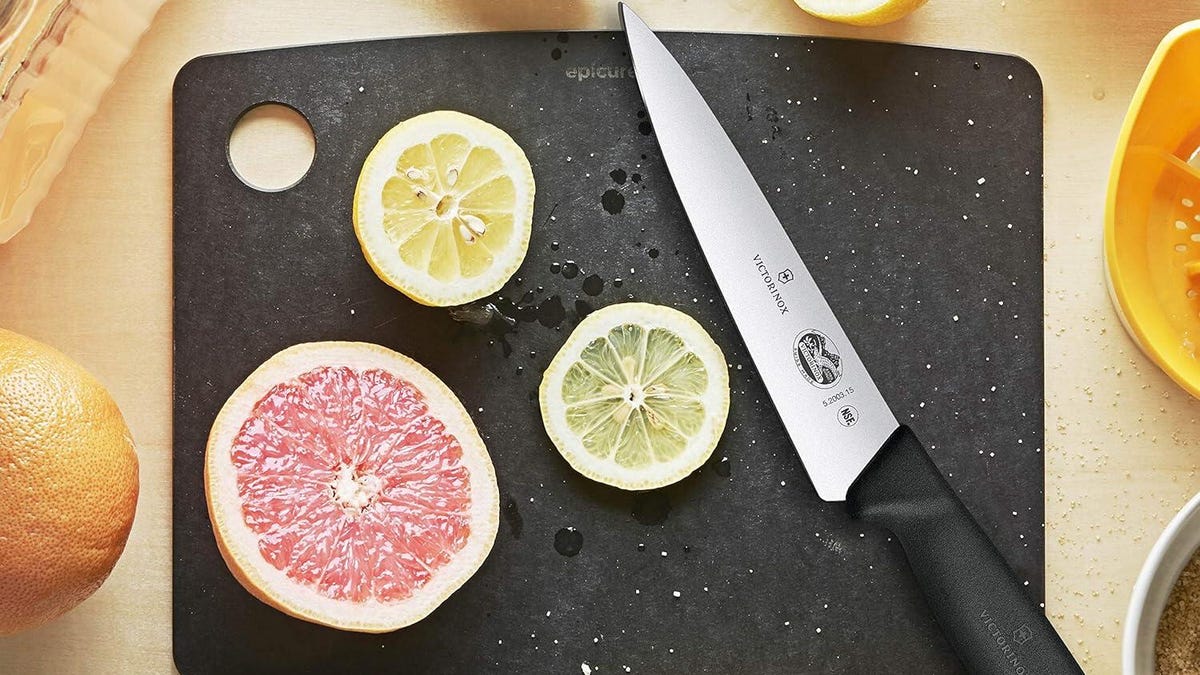If you're a kitchen professional, you've likely asked yourself multiple times: what is the best chef knife in the world? A chef's knife isn't just another kitchen tool; it's an extension of your arm, the heart of your craft, and the key to creating culinary magic. The right chef knife can transform your workflow, elevate your dishes, and inject remarkable precision into every slice and dice.
In this in-depth exploration, we dive deeply into the world of chef knives to uncomplicate the search. From materials and blade types to comparing features that cater to individual needs, lets uncover the life-changing features that separate a good chef knife from the best there is. Remember, this isnt just a decisionits an investment in your craft.

Why Choosing the Right Chef Knife Matters
A chef knife is so much more than an ordinary tool for cutting; it determines the ease, efficiency, and precision of your culinary tasks. Whether youre chopping herbs, slicing protein, or julienning vegetables, having the right knife in hand is paramount.
- Improved Safety: A sharp, well-balanced knife reduces slippage and guarantees more control.
- Enhanced Efficiency: The correct blade design minimizes effort while maximizing output.
- Tremendous Versatility: A great chef knife is capable of handling a wide array of cutting techniques and food types.
The Anatomy of the Best Chef Knives
Before identifying the best chef knife in the world, it's crucial to understand what makes a chef knife exceptional. You may have seen chefs on TV wielding blades that glide through food like butter. But what exactly contributes to this level of functionality?
Blade Material
Most remarkable chef knives are crafted from high-carbon stainless steel, offering a balance of sharpness and durability. Knives made of Damascus steel, for instance, boast not only technological superiority but also visually captivating patterns that showcase artisanal craftsmanship.
Looking to clean and maintain your knife properly? Check out How to Clean a Knife for thorough tips.
Length and Balance
The average length for a chef knife is between 8 and 10 inches, long enough to dice large vegetables yet formatted for controlled slicing. Balance is key herean imbalanced knife makes repetitive cutting exhaustive.
Blade Type
Straight-edged blades are ideal for precision cuts, while granton edges (small dimples) prevent food from sticking. If you're interested in learning more about how certain blades compare, read Santoku vs. Chef Knife.
Top Choices Among Industry Professionals
After extensive research and speaking with seasoned kitchen professionals, we've found several contenders for what is the best chef knife in the world. Here are the top picks approved by chefs globally:
The Shocking Precision of Japanese Knives
Japanese knives, like the Shun Classic Chef Knife, are crafted to offer razor-sharp edges, making them ideal for thin slicing. These knives are lightweight, which might appeal to chefs valuing agility over heft.
German Durability
A workhorse in the professional kitchen, Wsthof's 8-inch chef knife is incredibly durable and features a full tang for added strength. Its tremendous reliability makes it a favorite among Western-style cooks. Learn more about chef choices in What Knife Does Chef Ramsay Use?
A Modern Marvel with Advanced Technology
Modern options like Globals Chef Knife are renowned for being constructed from a single piece of stainless steel. These knives showcase innovative designs with non-slip handles and perfect balance.
How to Choose the Right Knife for Your Needs
Picking the best chef knife in the world depends heavily on your specific style and preferences. Here are crucial elements to consider:
- Your Dominant Hand: Left-handed users will benefit from ambidextrous knives or models designed for left-handers.
- Cooking Style: Opt for knives that facilitate your most frequent tasks, whether its delicate filleting or large-scale chopping.
- Ergonomics: Ensure that the grip feels natural and doesnt strain your hand over time.
Want tips on how to maintain the edge of your chef knife? Read How to Sharpen Kitchen Knives to prolong the lifespan of your tool.

FAQs
1. How do I know if my chef knife needs replacing?
If your knife no longer holds an edge despite frequent sharpening or has visible damage like chipped blades, it may be time to invest in a remarkable alternative.
2. Is a more expensive knife necessarily better?
Not always. While premium knives offer advanced materials and craftsmanship, what matters most is how the knife aligns with your cooking style, comfort, and functionality needs.
3. Should I get a knife block set or just one chef knife?
If you're a professional chef, starting with a single high-quality chef knife is often better. Sets are great for those needing versatility but may not offer the ideal balance and performance of individual purchases.
To learn about carrying multiple knives safely, check Where to Buy Chef Knife Bags.
Whether you're prepping for dinner service or crafting a five-course masterpiece, your chef knife remains an essential partner. Remember, finding the best chef knife in the world is more than a kitchen upgradeit's a life-changing investment in your culinary journey.
This article contains affiliate links. We may earn a commission at no extra cost to you.


























